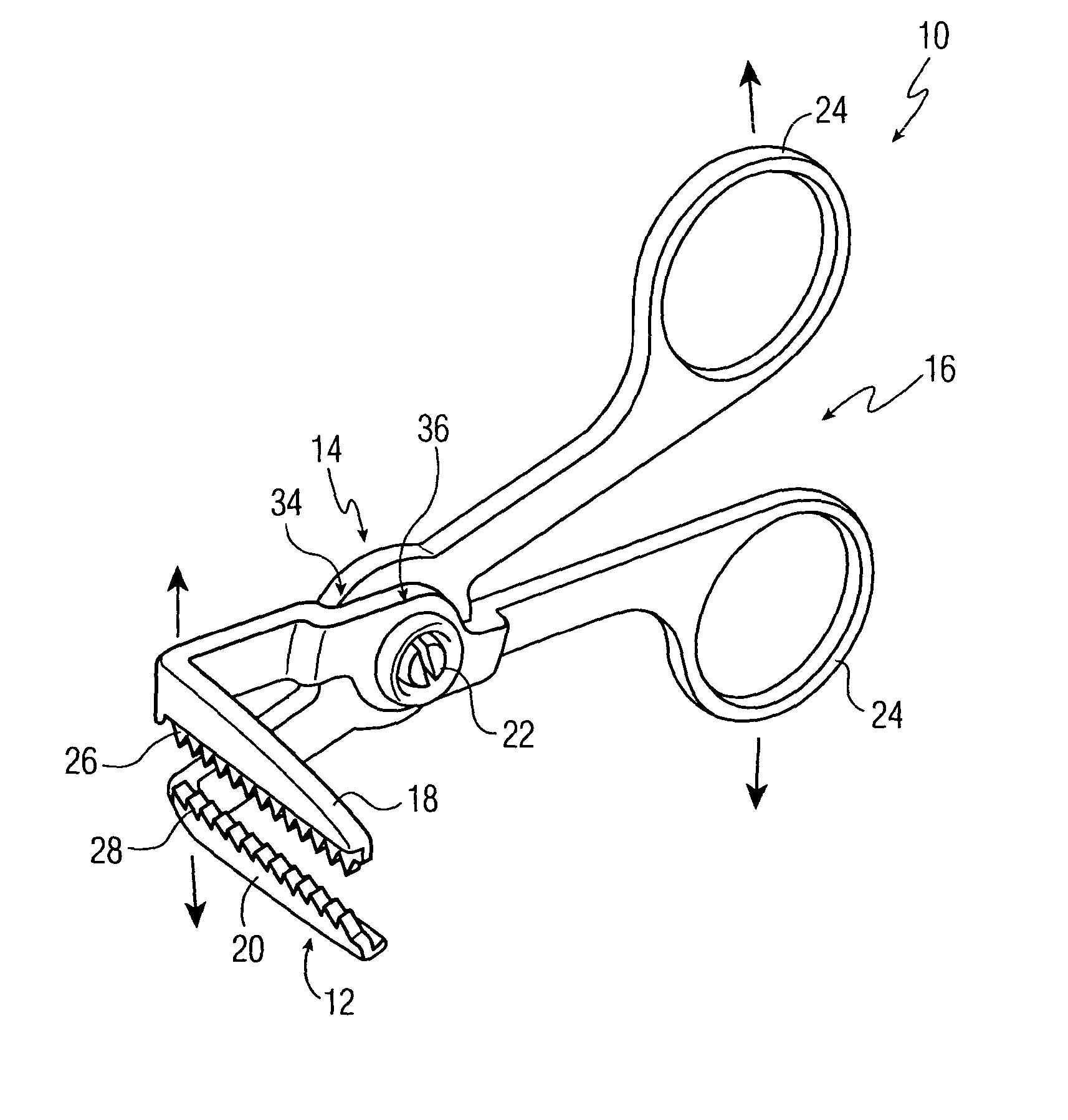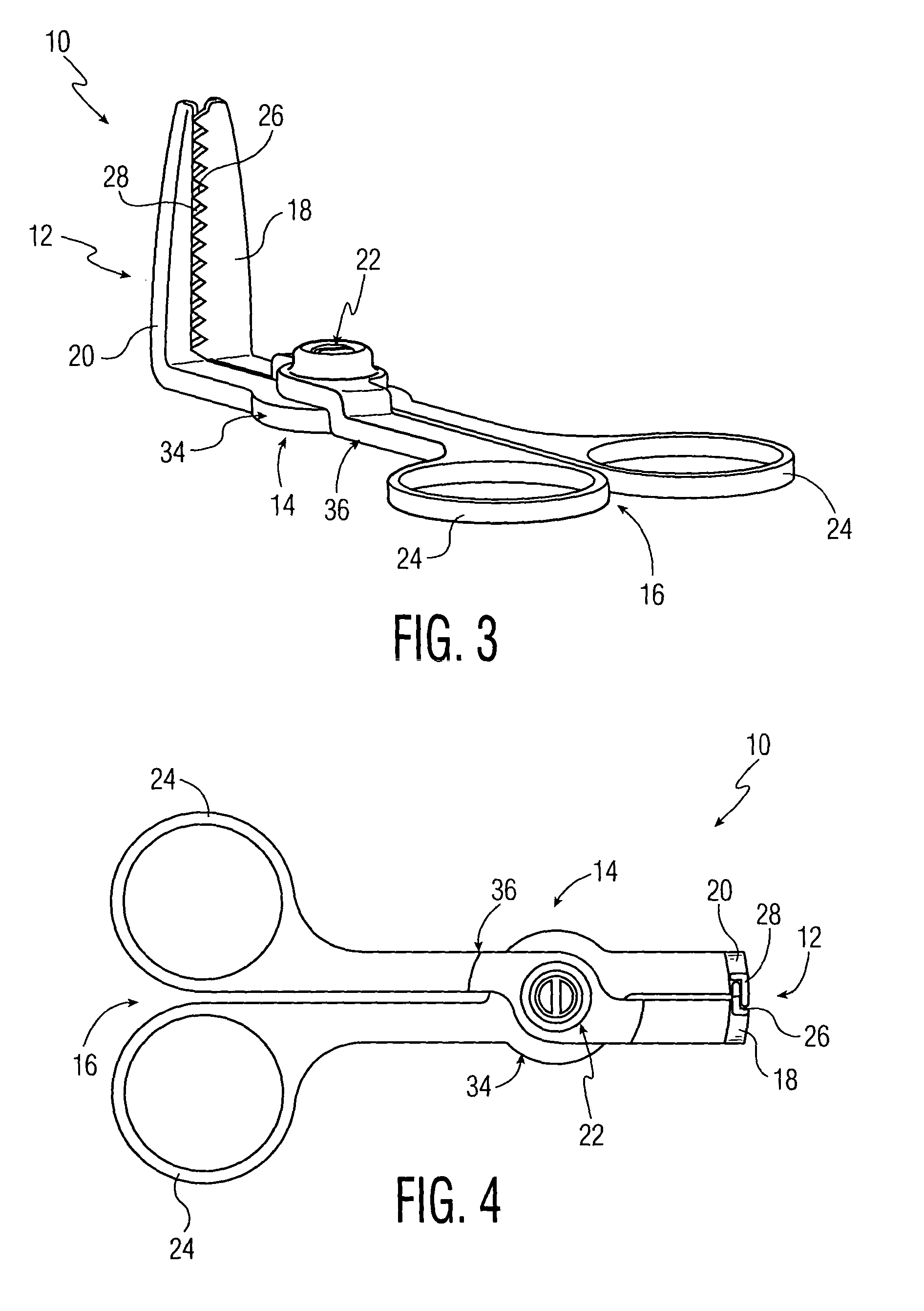Lice and nit removal device
a technology for removing devices and lice, which is applied in the direction of packaging foodstuffs, packaged goods types, transportation and packaging, etc. it can solve the problems of difficult to eradicate, diminish lice and nit removal, and health problems of those affected, so as to improve sifting and removal of lice, simple and effective manner, and enhance scraping and cleaning contact
- Summary
- Abstract
- Description
- Claims
- Application Information
AI Technical Summary
Benefits of technology
Problems solved by technology
Method used
Image
Examples
Embodiment Construction
[0029] The present invention is directed to a device for removing lice and nits present in the hair and / or on the scalp of a warm-blooded animal including humans. The lice and nit device is designed to be operated though scissor vise-like action. The lice and nit removal device of the present invention is further designed to allow a circumferential portion of the hair to be completely enclosed and contacted for achieving tighter tolerance between the device and the surface of the hair strands. As the device is drawn along the length of the hair, the lice and nits are more efficiently and effectively captured and removed, thus reducing the number of passes required to treat the section of the hair. The lice and nit removal device of the present invention includes a plurality of variably sized apertures which can be adjusted to provide tighter clearance with the hair captively retained therein, thus allowing various hair types, thickness, volume and curliness to be readily accommodate...
PUM
 Login to View More
Login to View More Abstract
Description
Claims
Application Information
 Login to View More
Login to View More - R&D
- Intellectual Property
- Life Sciences
- Materials
- Tech Scout
- Unparalleled Data Quality
- Higher Quality Content
- 60% Fewer Hallucinations
Browse by: Latest US Patents, China's latest patents, Technical Efficacy Thesaurus, Application Domain, Technology Topic, Popular Technical Reports.
© 2025 PatSnap. All rights reserved.Legal|Privacy policy|Modern Slavery Act Transparency Statement|Sitemap|About US| Contact US: help@patsnap.com



